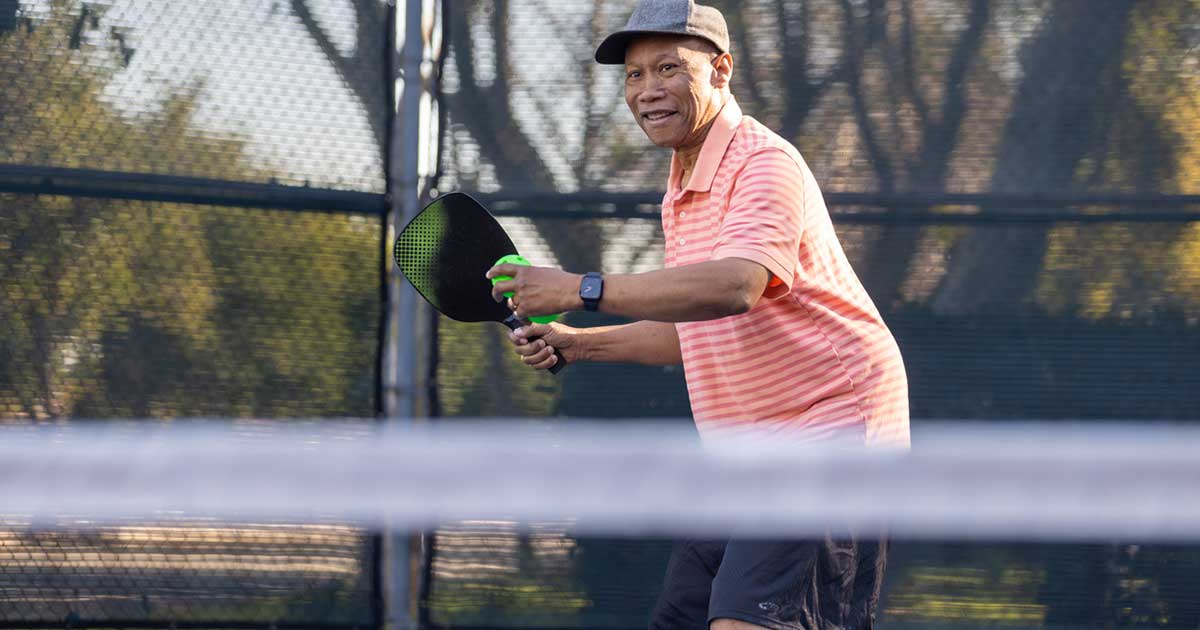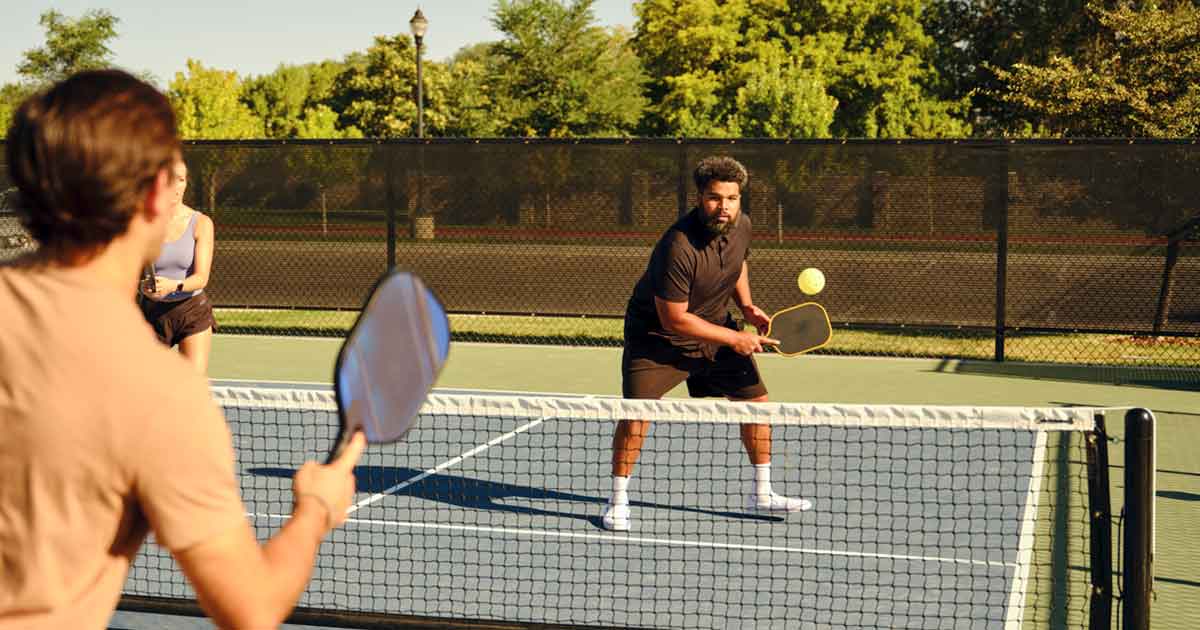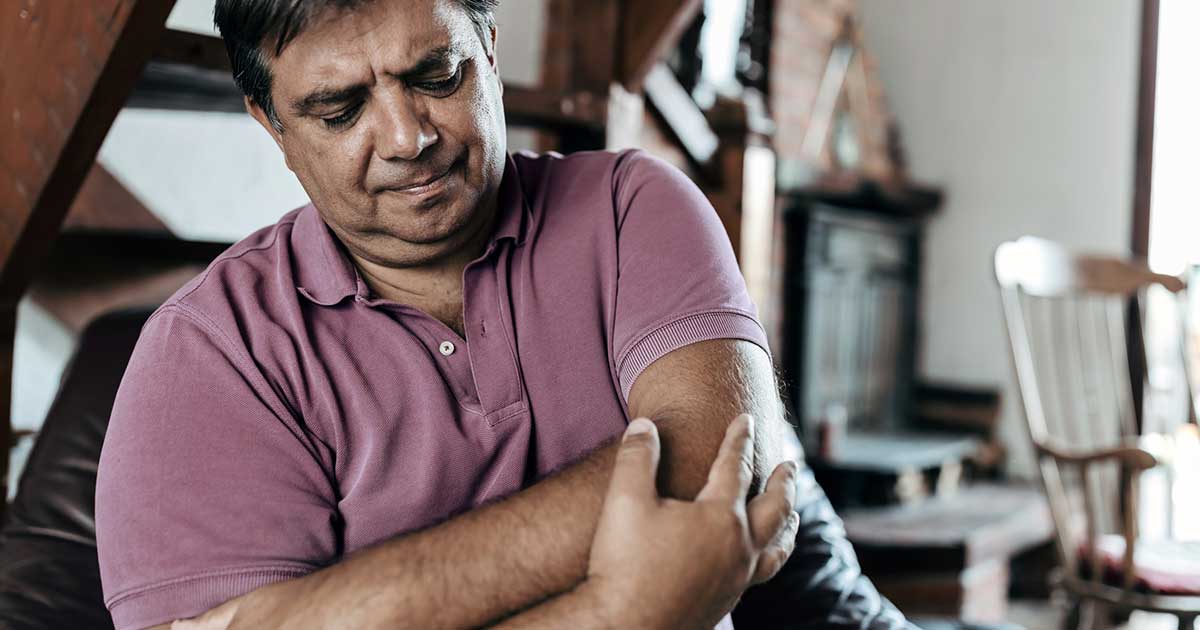
Advice to improve your movement, fitness, and overall health from the #1 in orthopedics in the U.S.
Playing Pickleball after Knee or Hip Replacement: What to Know
Pickleball can be a great sport for people after a joint replacement, but some precautions are in order.
Advice to improve your movement, fitness, and overall health from the #1 in orthopedics in the U.S.

Pickleball is also played on a smaller court than tennis and does not require as much running or movement. “All these components of the sport allow those who have undergone a total hip or knee replacement to continue or start to participate in pickleball after their surgery,” says Felix.
Here, Felix shares common questions about returning to pickleball after hip or knee replacement.
When can I get back to playing pickleball after my knee or hip replacement?
“Many orthopedic surgeons will allow their patients to return to pickleball once they’ve recovered from their knee or hip replacement, but with certain precautions,” says Felix. On average, this is typically about 3-6 months after surgery.
Whenever you return, it’s important to get the all-clear from your surgeon and PT first. “Always follow your orthopedic surgeon and physical therapist’s recommendations for the approximate time frame as to when you can start playing again,” says Felix. Remember it can take up to a year to regain enough strength, stability, mobility and endurance to feel fully comfortable.
Once you have been cleared to play, ease your way back into the game, says Felix. “Start by playing doubles. This will be less demanding for you physically and place less stress on the replaced joint. It is best to build the stress through the new joint slowly as your tolerance grows.”
How should I prepare for my return to playing pickleball after surgery?
First, talk to your physical therapist about your desire to play pickleball, whether you’re returning to the court or planning to take it up for the first time, says Felix. Though it may not be as demanding as tennis, “you’ll still need adequate strength, balance, endurance, neuromuscular control, flexibility and movement awareness to meet the demands of the sport,” she adds.
If you share your plans to play, your physical therapist can incorporate movements that address those issues into your rehab program. Additionally, “your program should include racquet-specific movements, lunges, split squats and core exercise, which you should be able to perform easily before you return to play,” says Felix.
Whether you’re a more competitive or more casual player, “it is recommended that you take an official lesson with a teaching professional to regain your timing for shots as well as to fully assess your movement” before you return to playing with your new knee or hip, Felix says.
And lastly, be sure you’ve got the right footwear. “Look for a sneaker that has a tread and can hold up over time,” says Felix. You might even try pickleball-specific shoes, which shoemakers are beginning to offer.
What’s a good warm-up before playing pickleball? Do I need to do a cool-down afterward?
“A proper warm-up should always be a part of your routine before starting to hit,” says Felix. “It is best to implement a dynamic warm-up, which can include activities like light jogging or skipping, agility movements such as side steps or karaoke steps, and dynamic stretching.”
It’s just as important to cool down after playing. “Do some static stretches, holding each stretch for at least 30 seconds and performing two to three repetitions of each,” says Felix. “Stretching is important for the whole body, not just the replaced joint.”
What other exercises are good to try after knee or hip replacement in addition to pickleball?
“We know pickleball is a lot of fun, but it’s important to incorporate variety into your workouts by including sports such as cycling, walking or swimming,” says Felix. In addition, “partake in a balance exercises program that includes both playing pickleball but also mobility and strengthening exercises.”
And most importantly, says Felix, “have fun and be careful in the kitchen!”
Published 4/8/2024


